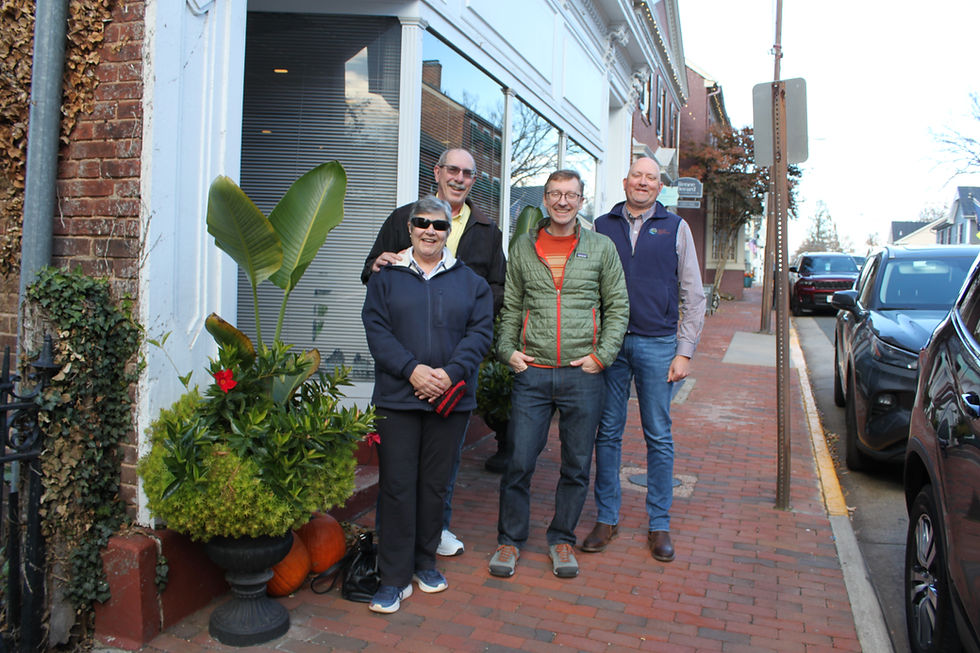Conservation Conversations: Strategic Conservation with NVCT Conservation Director, Matt Gerhart
- NVCT
- Jul 16, 2021
- 4 min read

No one can be everywhere all at once, so land trusts must take a strategic approach when deciding where to focus their efforts, which takes planning, helpful technology, partnerships, and a general understanding of the complexities of your region.
We sat down with Conservation Director Matt Gerhart to discuss how NVCT uses strategic conservation planning to identify the most valuable resources to protect.
Q: I wanted to start by having you define strategic conservation planning. What is it? And how does it help you establish your land conservation goals?
A strategic conservation plan is a science-driven look at where the most important places to protect are in our region. It takes our view of what's important in terms of forests, open spaces, biodiversity, wetlands, agriculture, history – and translates that into detailed mapping and eventually a series of focal areas for our region. We have 2.5 million acres of land in Northern Virginia, and without a focused approach, our impact will inevitably be diluted – the strategic conservation plan is a direct answer to that challenge.
Yet, it's worth noting that no plan provides perfect answers, and every property still has to be evaluated and protected individually. With a good plan in place, the pieces begin to add up to something greater than the sum of their parts.
Q: What tools will you use to build and execute this strategic approach to safeguarding natural areas?
Primarily we use GIS landscape analysis, which is a fancy way of saying we map different aspects of the natural and human landscape using the best available data and compare them to one another to see where the highest value areas lie. Our region is blessed with good datasets, so it's a matter of selecting the ones that relate most to what you value and developing the thresholds and categorizations that make the most sense. But more than the data, it's a people exercise – meaning working with our staff, board, and partners to ask tricky questions. What does impactful conservation really look like? How can we target and focus on the most important landscapes without leaving smaller gems out? What will we do differently once we have this information?

Q: What would you say are the most critical factors deciding what type of conservation values should take priority over another?
What conservation planners typically look for are large, intact areas that can connect to one another, but in a very diverse urban region like ours what matters can range from large swathes across our rural areas down to very small patches in the urban core. The data can't directly tell you what should take priority; only people and the way they value places can. However, we have great science showing the reinforcing nature of open spaces, forested areas, and water resources at many scales into what could be called "strongholds."
We know that in our region, stream valleys and estuaries provide refuge and connectivity for wildlife, give us clean water, and absorb and spread our floodwaters. Our forests are the core homes for many of our common wildlife, sequester significant amounts of carbon, and cool the urban core. Our agricultural and heritage resources are relatively well mapped and understood, and so we can pretty readily see how the various aspects of the landscape piece together.
Q: During the "NVCT's Changemakers: Saving Nearby Nature at a Crossroads" event, Senator Dave Marsden suggested protecting rivers and streams and the land surrounding them, such as riparian buffers preventing stream pollution and controlling erosion; gives a project more "bang for the buck." Do you agree with this approach toward prioritizing projects?
For a small organization with limited funding and resources, every decision you make to do something is a decision not to do something else. So yes, I think it is appropriate to ask how we can be conserving the places that offer the best overall mix of resource values.
It doesn't mean, though, that we stop protecting opportunities that are unique or provide more singular values, it just means that you consistently focus more of your proactive efforts in those areas that matter.
Q: The current Administration has made some level of commitment to protecting land and water over the next decade. What are some of the specific and measurable achievements you hope NVCT makes over this same period?
We've already made, with this plan, a distinct commitment to more focused outcomes that we'll be able to measure, and we've set goals to increase the number of quality projects we do over time. You don't want to just translate good conservation work into simple acreages and metrics because each place matters in such interesting and unique ways. But the Administration's goal of "30 by 30" – meaning conserving 30 percent of the U.S. by 2030 – is both laudable and desperately needed if we're ever going to reach the levels of protection nature, and we as people who depend on nature, truly need. The truth is this will remain very hard without a major increase in public support and funding, and Northern Virginia doing its part will be critical. Land trusts working with private landowners throughout the region will be a key part of the puzzle.








Comments